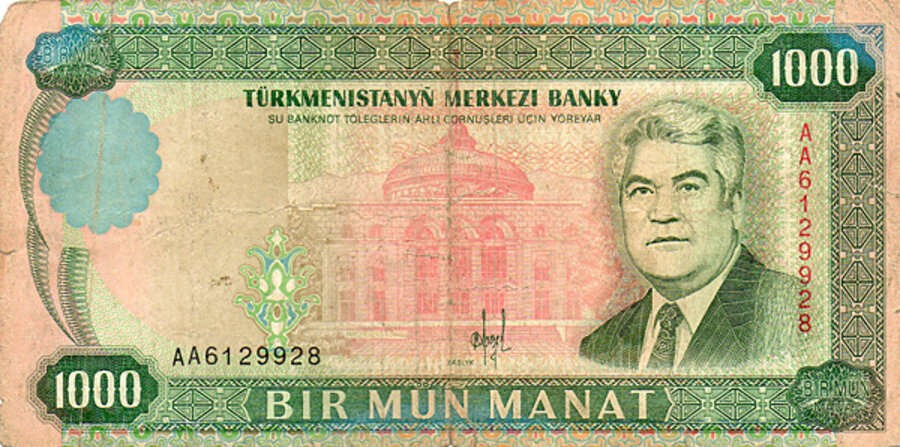Pictured: 1,000-manat note, acquired in Ashgabat in 2001
The late Turkmen dictator Saparmurat Niyazov, known to his subjects and the world as “Turkmenbashi” (“Father of all Turkmen”) had a visage that was as ubiquitous in Turkmenistan as that of Saddam Hussein in Iraq. For many commentators, Turkmenbashi was synonymous with Turkmenistan itself.
As an indicator of just how much the Turkmen leader loomed over everyday life, Mr. Niyazov featured himself on every denomination of the manat, the currency introduced to replace the ruble in the early 1990s.
In comparison, Hafez al-Assad, President Bashar al-Assad's father, has only been depicted on Syria's 1,000-pound note.
After Niyazov’s death in December 2006, his successor introduced a series of post-Turkmenbashi manat notes. The official reasoning for the fresh currency was to help fight out of control inflation by revaluing the manat, but the new notes were also meant to help deconstruct Turkmenbashi’s pervasive cult of personality by drawing on historical figures from Turkmen lore and Ashgabat’s bland, foreign-built architectural achievements.





